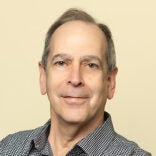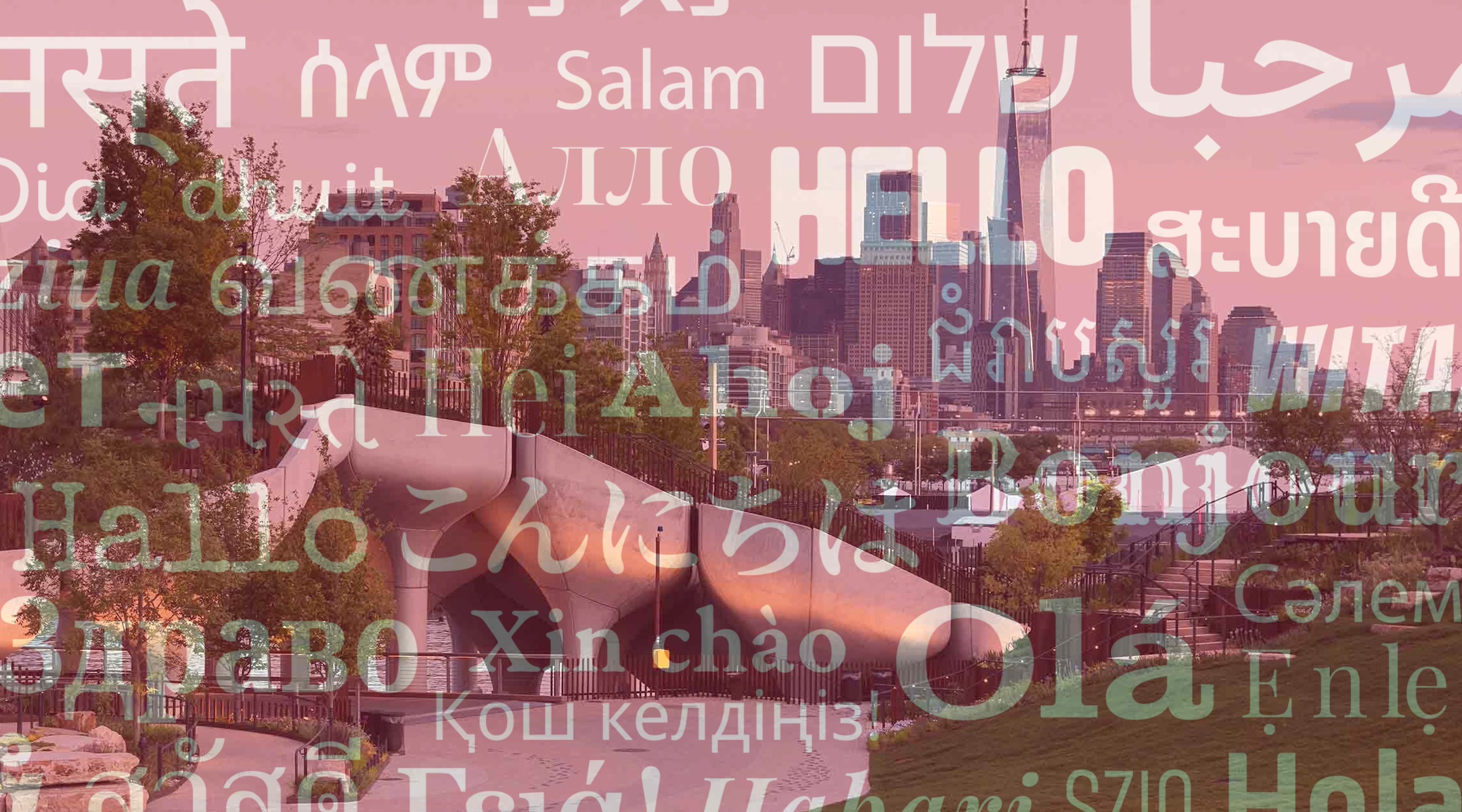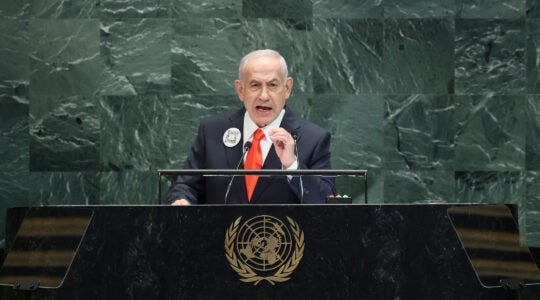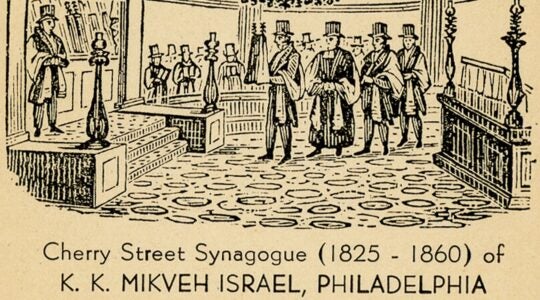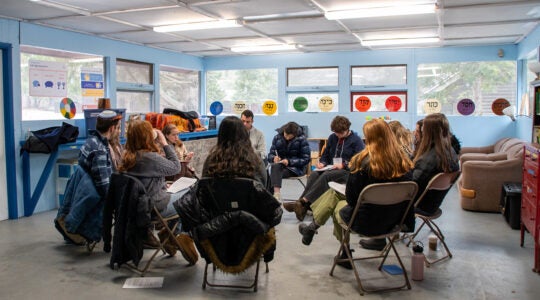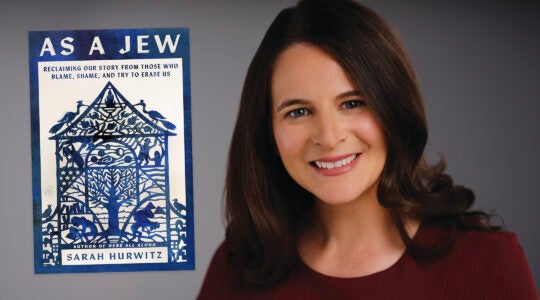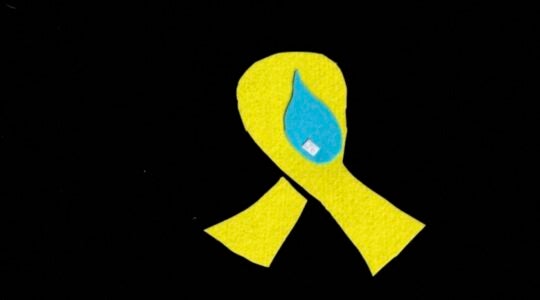Years before “The Power Broker” started appearing on the shelves of every journalist giving a Zoom interview, I would enlighten (my wife would say “bore”) friends and family with my enthusiasm for Robert Caro’s monumental biography of New York City planner Robert Moses. I’d gush about how it completely transformed my view of the city and its suburbs, and showed me how the roads, beaches, parks, infrastructure and even values of the region where I grew up were shaped by one powerful man.
In recent months I’ve found a new obsession: Ross Perlin’s “Language City.” Perlin’s book traces the work of the Endangered Language Alliance, which he co-directs with Daniel Kaufman. It aims to document and preserve the 700 languages spoken across the five boroughs — perhaps the most language diversity in any city ever. Perlin reports that one in every 10 languages spoken on the planet has a speaker in New York City.
Like “The Power Broker,” “Language City” cracks the city open like a geode. Perlin describes just one square mile in Brooklyn that “is home to a Ghanaian evangelical church, a Russian banya, a florist/bar for hipsters, a Juhuri-speaking synagogue for the Jews of Azerbaijan and Daghestan, Dominican hair salons, Pakistani auto body shops, Haitian dollar-van stops, an organization of Darfuri refugees, a Cambodian Buddhist wat, an Albanian mosque, a Panamanian bar, and a restaurant where Uzbek Uber drivers swig bottles of Jameson while savoring fine kebabs.”
It’s a portrait of New York, Perlin told me in an interview Tuesday, that makes us recognize “the linguistic diversity around us, the riches that it brings, and the advantages that it brings to this city and this country. It’s what makes it tick.”
“Language City” is also a story of loss: Perlin writes that few immigrant languages typically make it beyond the third generation, making New York a “Babel in reverse,” where dominant languages like English, Spanish and Mandarin threaten to smother NYC’s 300 or so endangered, indigenous and minority languages until few are left. This flattening extends to Jewish languages, which the ELA tracks in its role as a partner in Hebrew Union College-Jewish Institute of Religion’s Jewish Language Project. In the book Perlin notes how Iraqi Jewish New Yorkers, with synagogues in Jamaica Estates and Great Neck, Long Island, once spoke Baghdadi Judeo-Arabic; “Today, every Jewish form of Arabic is almost gone,” he writes.
Out of a small headquarters in Manhattan, the ELA is doing what it can to reverse trends like these, first and foremost with a “Languages of New York” map that includes over 1,200 sites around the city where those 700 languages are spoken. ELA also records languages and helps their speakers find resources to promote their use. During the pandemic, it worked with the city to make sure translations of important health information were available in languages other than the 10 “citywide” languages that count 100,000 or more speakers in the five boroughs.
On Wednesday, ELA is bringing awareness of NYC’s language diversity to an unusual venue: Little Island, the new public park built on piers just off the West Side Highway near 14th Street. From Aug. 14-18, in collaboration with Gung Ho Projects, ELA will present free performances and music by speakers of endangered languages, including the Kuranko language of southwestern Africa, the Nahuatl of indigenous Mexico, Tibetan and Pontic Greek.
“They’re going to bring their languages,” Perlin said of the performers. “But they are going to perform [the themes of] the book and weave it all together into a story of the city and its languages.”
Perlin, who lectures in linguistics at Columbia University, earned his PhD in linguistics from the University of Bern in Switzerland for his work on Trung, an endangered language of southwest China. In 2001, while doing his research in China, he made videos in Yiddish under the title “A New York Jew in China.” The project was commissioned by Boris Sandler, then the Moldovan-born editor of the Yiddish Forward, to whom Perlin devotes a chapter in “Language City.” This year Perlin, 41, was named to the New York Jewish Week “36 to Watch” list.
We spoke about the fate of Yiddish, why multilingualism is good for individuals and cities, and why “language justice” is necessary public policy.
Our interview has been edited for length and clarity.
I found your book to be a revelation, but I also want to ask questions that challenge some of its underlying assumptions. There are two strong threads in your book: The first is a celebration of New York’s linguistic diversity, and of linguistic diversity in general. You also have a mission to change the culture to make sure that these languages don’t die. So tell me a little bit about why that’s important, especially when it goes against the grain of, say, the American melting pot, which assumes that people come from everywhere but we all assimilate into a common culture of English-speaking Americans.
Celebration is a part of it and central to the story. We have to begin by recognizing the linguistic diversity around us, the riches that it brings, and the advantages that it brings to this city and this country. It’s what makes it tick.
And I think we have to realize the loss that can come with so-called straight line assimilation. Certainly, English is the lingua franca of the United States and of New York City. It’s essential in education and work and so on. But I don’t think that amnesia is a necessary condition. Research shows how New York City in particular, and other cities like it, as they’ve become more and more diverse over time, have functioned through multilingualism, even if that kind of overarching story that we’ve told ourselves has been about assimilation to English. That has never really been the full story on the ground.
And then there’s the concept of language justice, that what actually brings us together is making sure that those who need translation and interpretation can access it. It’s part of the challenge, but also the extraordinary opportunity, of this ever more globalized world and ever more globalized immigration story.
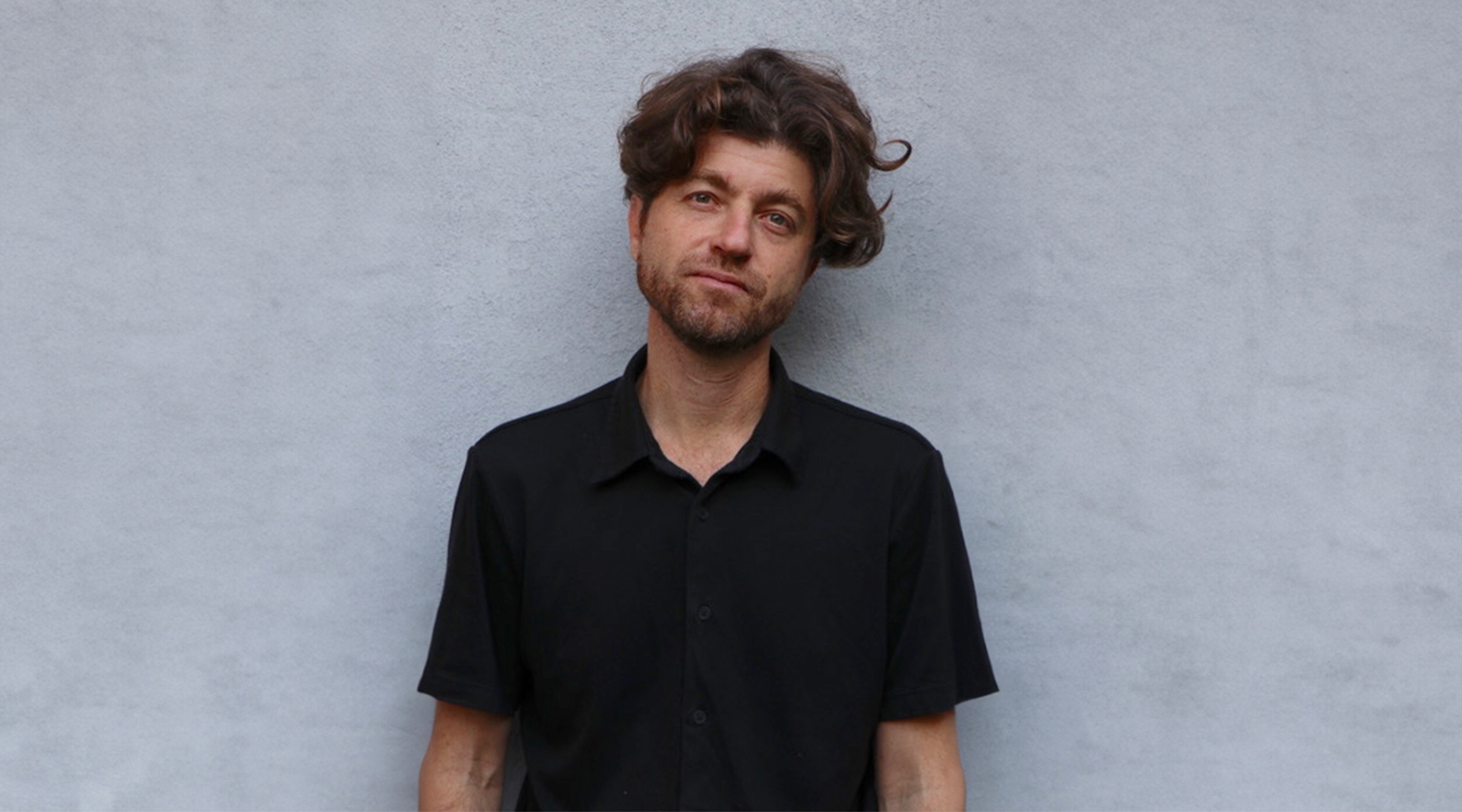
Ross Perlin lectures in linguistics at Columbia University and co-directs the Endangered Language Alliance. (Cecil Howell)
In your book you write, “only in the face of intense political, economic, religious or social pressures do people stop passing on their mother tongue.” But I keep going back to the American Jewish experience, where it felt like, in the interest of assimilation, Jews gave up Yiddish voluntarily because they were eager to embrace the American future, which was in English.
There’s more to the story than that. During the great migration that my family was part of in the late 19th, early 20th century, Yiddish strengthened and flourished on these shores more than ever before, and especially in New York and on the Lower East Side: the blossoming of Yiddish theater, of Yiddish journalism, of Yiddish literature. People were ready to give up some of the other languages of Eastern Europe that they spoke, including Polish, Russian, German and Ukrainian, which had never been their mother tongues. But Yiddish was held very dear.
And they were able to freely speak it here and publish in it here, and do theater in it here, which led to this huge blossoming of Yiddish for a large portion of the population, and especially that initial immigrant generation and some of those who followed it.
And we know what happens to Yiddish, including suppression in the Soviet Union, assimilation and of course the Holocaust — not to mention the extraordinary rise of modern Hebrew, which complicates the story. Yiddish is crushed by all of these forces, as well as the challenges of intergenerational transmission to an American-born generation. So I think the story lies more in that complex of forces, rather than in a kind of mythologized idea that people stepped off the boat at Ellis Island and wanted to forget Yiddish or change their names, which didn’t happen at Ellis Island, as I talk about in the book.
You tell stories in the book about many languages, including Seke — spoken by 700 people in Nepal and perhaps a hundred others in a single Brooklyn apartment building — Lenape, the New York area’s indigenous language, and the Central Asian minority language Wakhi. Forgive me for asking about Jewish languages but I was really blown away by the range of Jewish language diversity — or at least how diverse it once was.
We’re part of the Jewish Language Project, and we’ve done what we can to document some of the vanishing Jewish linguistic diversity, which is nowhere more present than in Brooklyn. That’s the only place outside of Israel that has this great a concentration of Jewish languages. A lot of people may not have a sense of Jewish diversity in general. We’re not just talking about Ashkenazim and Sephardim. There are different forms of Judeo Arabic, the various languages spoken by the Jews of Iran, the language of the Bukharian Jews, and Juhuri, the language of the so-called mountain Jews of Azerbaijan and Dagestan, which has been a focus of our research. So there are all these Jewish languages which are now highly endangered because of the contraction of the Jewish Diaspora, because of all the various displacements and tragedies in Jewish life globally across the 20th century that are ongoing to some extent. There’s an extraordinary need to recognize as a part of Jewish history, and even contemporary Jewish life, this human cultural and linguistic diversity.
Multilingualism has been a component of Jewish life for the last 2,000 years, at least, and American Jewish monolingualism in English is an outlier. Aside from the enormous benefits of multilingualism that linguists have been establishing through research, multilingualism is also part of the warp and woof of Jewish life. I think it’s something not just to celebrate, but to sustain.
You find a number of parallels between the challenges Yiddish speakers and people from other linguistic minorities face in preserving their languages. What are a few?
Yiddish was the mother tongue of all my great grandparents’ generation, but for my grandparents and parents, Yiddish became vestigial, even a punchline, the dirty words. And even when there was a real attachment to Yiddish — I grew up going to the Folksbiene Theatre, and the klezmer revival — there was no recognition that it was actually a full blown language with grammar, and in fact, some of the attitudes of shame and that Yiddish was somehow a broken language — a jargon — is familiar to speakers of endangered languages whose languages are not regarded as “real” languages either in their home countries or here. And so it was extraordinary to discover really only in my 20s that Yiddish had an entire literature, that there were gigantic dictionaries and grammars, that there was YIVO, and that indeed there was this Hasidic revival as well as the world of secular Yiddishists I describe in my book. So I tried to immerse myself in that and learn Yiddish as a language, not just as a lot of individual words.

A group of men hold signs in English and Yiddish at a labor rally on the Lower East Side, ca. 1910. The Yiddish sign reads, “All workers at Shushansky’s shop 117 Hester Street are going back to work. 50 hours, $50 treat.”(Collection: International Ladies Garment Workers Union Photographs)
It sounds like that is what ELA hopes to do for other minority languages — boost their status or their speakers’ self-confidence by preserving, promoting and celebrating these languages and connecting communities of speakers. What is your ultimate dream for the ELA?
In the dream scenario, there would be funding to have a real, full-time staff where we could do in-depth work on languages where there’s interest from the community, where there’s a need in terms of documentation: quality materials, textbooks, classes, literature, children’s books and other kinds of materials. There’s enormous interest among people who want to get involved in various ways, but we don’t have the capacity to support that.
Is there a policy ask you often find yourself making, whether it’s bilingual education in schools, translation of city information for different language groups or some other effort to promote linguistic diversity?
Language policy and language justice are emerging areas that people in government are thinking about, just given the enormous challenges of migration and diversity in cities today. Our urban language map goes well beyond what the Census captures in terms of language; we’ve documented the presence of something like five times the number of languages in New York that the Census captures. The Department of Education and the Mayor’s Office of Immigrant Affairs are leaders in its policies around multilingualism and bilingual education. There [are] 13 different dual-language programs in New York City schools. We support greater language access for everyone, so that people can have education in their mother tongues.
This is one of the great things about New York and other cities, that we have all of this knowledge and these linguistic riches here. How can we give people access to it? And then, of course, in courts and hospitals and other really crucial spaces, it’s life or death for people to be able to make themselves understood. We’re trying to provide the linguistic knowledge and experience to help policymakers navigate these issues.
The New York Jewish Week brings you the stories behind the headlines, keeping you connected to Jewish life in New York. Help sustain the reporting you trust by donating today.
